Design Articles
What is a brand?
As the owner of a business or startup, the subject of branding has probably come up in one or more conversations. If you’re like most people, the meaning of the word "brand" is fuzzy, and you might find yourself asking “what is a brand?” or “do I need a brand?” Read on as I try to tackle the question of “what is a brand?” once and for all, as well as other related questions.
As the owner of a business or startup, the subject of branding has probably come up in one or more conversations. If you’re like most people, the meaning of the word "brand" is fuzzy, and you might find yourself asking “what is a brand?” or “do I need a brand?”
Despite the fact that the word "brand" has become a near-meaningless buzzword, the concept is more important than ever in the crowded marketplace we all must do business in. So I wanted to try to tackle the question of “what is a brand?” once and for all, as well as related questions of what is brand-ing, how you go about building a brand, the benefits and challenges of branding and what kind of organization should invest in developing a meaningful brand.
What a brand isn’t
Before we get into what constitutes a brand, lets first talk a little about what it is not. You’ve probably heard this before, but I’m going to say it again: your logo is not your brand. A logo is simply one of your brand's assets—a hallmark. Your corporate colors, mascot or product or company name are also not your brand. These items are all important identifiers of your brand, but they are not the brand itself. A brand is not actually a tangible thing—it is a concept.
So what is a brand?
If you’ve done any reading or research about the concept of branding, you know that there seem to be a lot of ways to define what is a brand. Here are a few of the clearest and most concise definitions of a brand that I have read:
A brand is “a person’s gut feeling about a product, service, or company.” — Marty Neumeier
A brand is “a singular idea or concept that you own inside the mind of a prospect.” — Al Reis
A brand is “a promise wrapped in an experience.” — Charlie Hughes and William Jeanes
A brand is “the set of characteristics that arise in a customer’s mind when that person hears your name.” — Bill Chiaravalle
A brand is “a container for a customer’s complete experience with the product or company.” — Sergio Zyman
A brand is “a methodical influence on the creation of beliefs in the consumer's mind.” — Dan Herman
Basically, a brand is your customer’s perception of you. It is an intangible concept—your audience's emotions and feelings toward you. As Marty Neumeier has famously said: “a brand is not what you say it is. It's what they (your customers) say it is.”
What is branding?
So if a brand is what your customer or audience thinks about you, branding is the process of shaping and influencing that perception. The fact is that your organization already is a brand—meaning, your customer already has an opinion of you—it is just up to you whether you choose to be involved in purposefully shaping those thoughts.
You shape your audience's perception by designing the experience associated with your organization. Other synonyms for branding would be signaling, positioning, or as defined by Debbie Millman, “deliberate differentiation.” As reflected in Millman's statement, branding requires a great deal of intentionality.
How do I build a brand?
If branding is deliberate differentiation, then you must start your brand development by identifying how you intend to be different. Notice I said "how you intend to be different" not just "how you are different." Differentiation is not a given, you must search it out.
The first step to discovering your difference is to identify your purpose for being in business. Once you know your purpose, you can identify your organizational beliefs and define the style by which you conduct business. These items—purpose, beliefs and style—make up the foundation of your brand. If the term foundation isn't clear enough, you can also think of these qualities as the skeleton or DNA of your brand. Your brand foundation is the concept (you know, the intangible concept referenced earlier) that you want to reflect to the world.
Your brand foundation is only one half of the equation though. Once you understand your foundation, you must develop a plan for acting on that concept. It is this action, or experience, that brings the brand to life for your customer. Your brand experience is built from visuals, words and interactions that are designed to demonstrate your organization's purpose, beliefs and style.
You must consistently reflect your foundational principles through each point of contact with your customers in order to influence their perception of your organization in their mind.
What are the challenges of branding?
The benefits of branding are many (we'll get to that in a minute), but it is not for the lazy or short-sighted. Building a meaningful brand is hard (but potentially very rewarding) work. Here are a few challenges you'll need to be prepared to face:
Your brand vision has to come from the top. The leadership of your organization must be intimately involved with the development and execution of the brand (down to even the most seemingly insignificant aspects of the business). You have to actually have beliefs to build on. Identification of your purpose and beliefs requires a lot of soul-searching that not everyone is prepared to take on.
You'll be forced to find your uniqueness (or face your lack thereof). Branding is deliberate differentiation, so you'll need to search out those differentiators, and if you can't find them you may need to pivot onto a different path that is less traveled.
It only works if it is authentic. Customers will see right through you if you're not authentic. This means you might need to face the fact that what you actually are isn't what you want to be, and from there you'll need to decide whether to make a change or find a unique angle on your current qualities.
It is never done. Not only must you always be intentional in how you present the brand, but it is natural for your brand to evolve little by little over time and you must remain in-tune to those changes and realign continually.
You will have to say no sometimes. Once you put a stake in the ground, you will realize that not all opportunities or decisions align with your beliefs. Things that may very well work for other organizations might no longer be a good fit for yours. You'll need to make tough decisions in order to deliver on the promise you've made with your brand.
Your customers will hold you to a higher standard. The stronger your brand, the greater your customers' expectations will be. They'll be rocked by any piece of your experience that is not on-brand, and they will let you know about it. Let this feedback challenge and fuel you to become an even better organization.
It is an investment. One of the driving principles behind branding is building value for your customers, and developing value is rarely the cheapest way to go. Not only must you invest a great deal of your own time and energy into it, but you'll need professional help with execution, and gone are the days of simply picking the cheapest production option and running with it. All of these items require consideration now, but those considerations will pay off in the long run.
It is a long game. It takes time and there isn't always a metric to track it. But I challenge you to watch your numbers over time, and you should see long-term gains in customer loyalty, referrals, and profit margins.
What are the benefits of branding?
Yes, that was a long list of potential hurdles, but the benefits of branding are powerful. Consider this: when you invest in building a brand, you create something your customers can believe in. They believe in you because they find a reflection of themselves or who they want to be in you. Finding a reflection of yourself in a product or service translates to fierce loyalty, and loyalty is pretty much the pièce de résistance of any sales strategy. But it gets even better than that: loyalty is an indicator of value, which typically produces a nice side effect in the ability to command a premium price because your customers place a higher value on your product or service than they do on your competitors' products or services.
How do I know if I need to build a brand?
Let’s call a spade a spade: not every organization needs to build a brand. If you sell a commodity product or service and have no desire to put in the work to innovate your way out of that position, then branding is not for you. When you sell a commodity, you are signing up for a race to the bottom on price, and branding has no horse in that race. However, industries that have long been labeled as commodities are rapidly spawning new upstarts that are finding ways to compete on true value, so you may not be stuck in the commodity game if you don't want to be.
On the flip side, if you sell a product or service that is rooted in creating true value for your customer, then branding is for you. You will want to take a look at the foundations of your organization and make an honest judgment on whether you can identify a true area (or multiple areas) of differentiation. Once you've identified your differentiator(s), you need to question whether they are being reflected in your customer's experience or if you need to put work into better defining the experience of the brand to be more memorable. If you're wedged into a crowded market, you might look to brand development to differentiate you from the pack, or if you look around at your competitors and can't see any evidence of a strong brand presence within their organizations, then you could be sitting on a prime opportunity to develop a meaningful brand own your market in the eyes of your customer.
Remember, your customers are developing their perception of your organization right at this moment. Now that you have a better understanding of branding—have you done anything lately to shape that perception, and ensure it is accurate and memorable?
More info link urls
Logo vs. brand by Seth Godin
Where style and substance meet by Studio Science
Stop mismanaging your brands by Steve McKee
What Breakfast at Tiffany’s can teach us about branding by Strong Design
Why your brand is more important than your product by Entrepreneur Magazine
Brand is a 4-Letter Word by Austin McGhie [Book]
The Brand Gap by Marty Neumeier [Book]
2016 ArtPrize design system
This past fall, I had the opportunity to attend ArtPrize in my hometown of Grand Rapids, MI. As defined on their website, ArtPrize® is an open, independently organized international art competition that is hosted by over 200 venues throughout downtown Grand Rapids. It is the world’s largest art competition, and 2016 marked its 8th year in existence. This year, event branding and design was on my mind because I was on the home stretch of designing the collateral for Phoenix Design Week collateral, and the ArtPrize 8 event branding was absolutely stunning.
This past fall, I had the opportunity to attend ArtPrize in my hometown of Grand Rapids, MI. As defined on their website, ArtPrize® is an open, independently organized international art competition that is hosted by over 200 venues throughout downtown Grand Rapids. It is the world’s largest art competition, and 2016 marked its 8th year in existence.
This year, event branding and design was on my mind (because I was on the home stretch of designing the collateral for Phoenix Design Week 2016 collateral), and the ArtPrize 8 event branding was absolutely stunning. It was designed by Conduit, a design studio based in Grand Rapids, and featured a bold color palette paired with a library of art-inspired patterns and textures masked into an abstract 8-shape. Together the elements created a distinctly identifiable design language for the brand. Conduit used the colors, patterns, and 8-shape in a myriad of ways, which created a rich, complex, and exciting image for the event.
Being the design geek that I am, I dare say I paid more attention to the brand system than the artwork at the event. Take a peek at some images of the brand in action below!

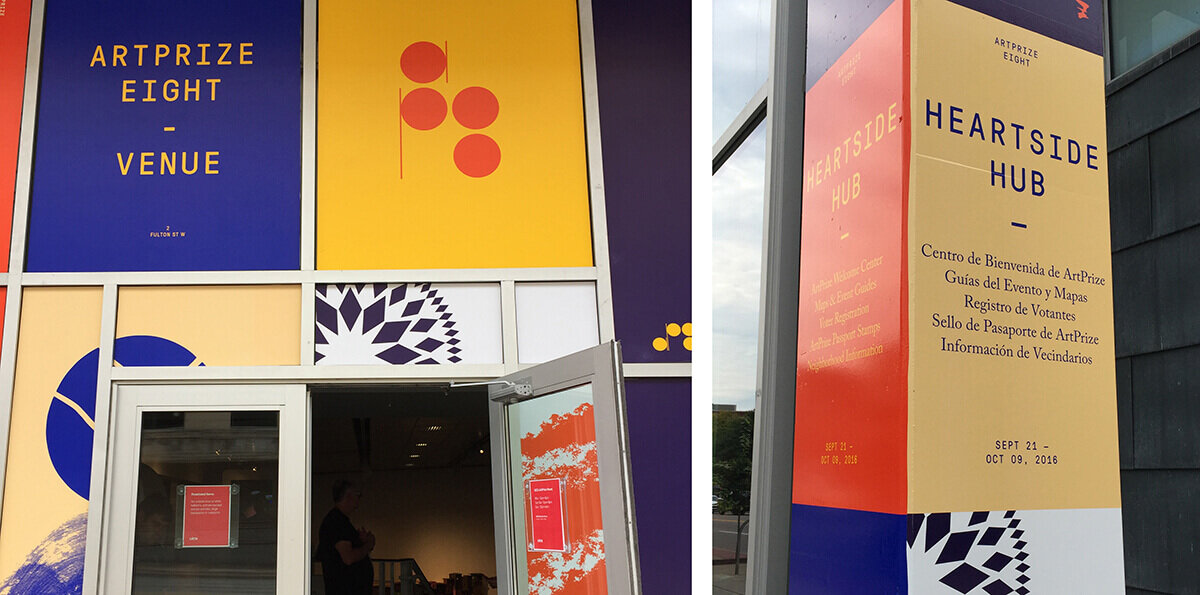
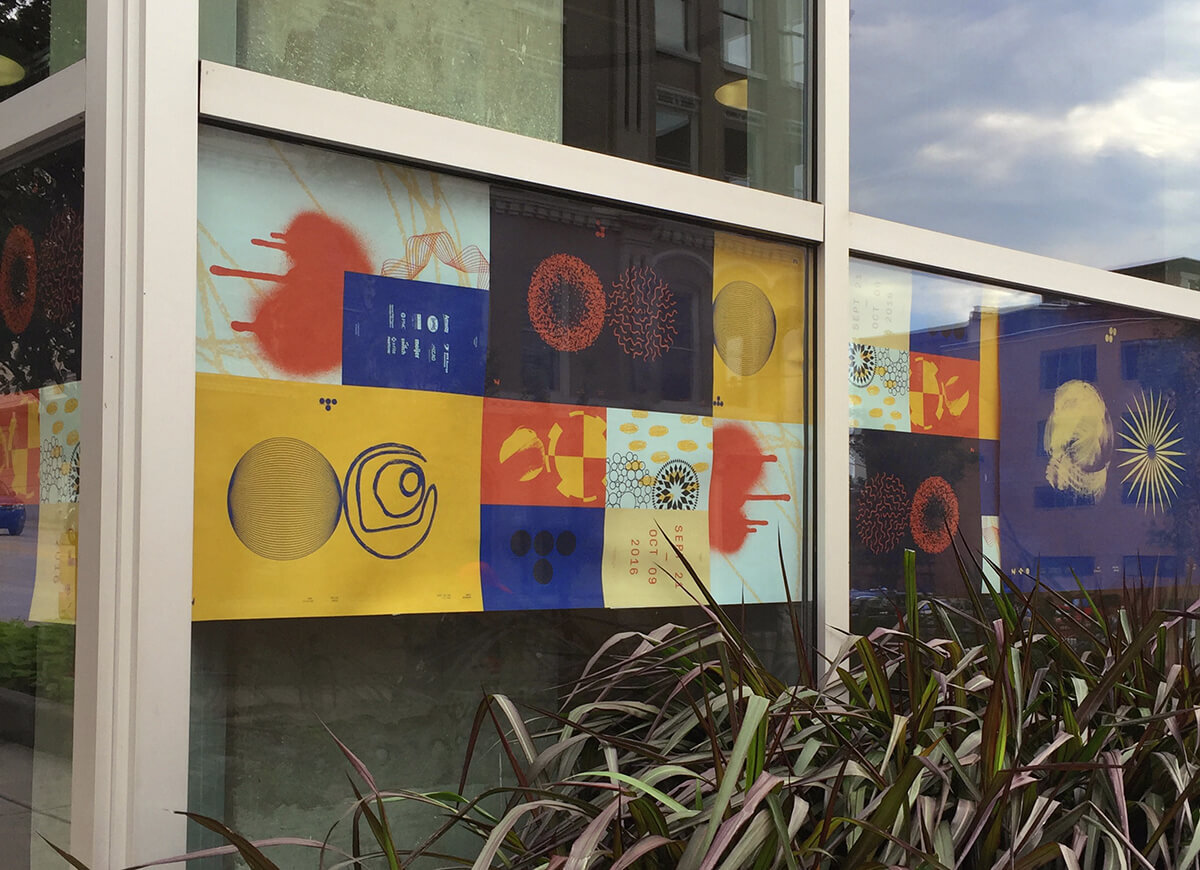
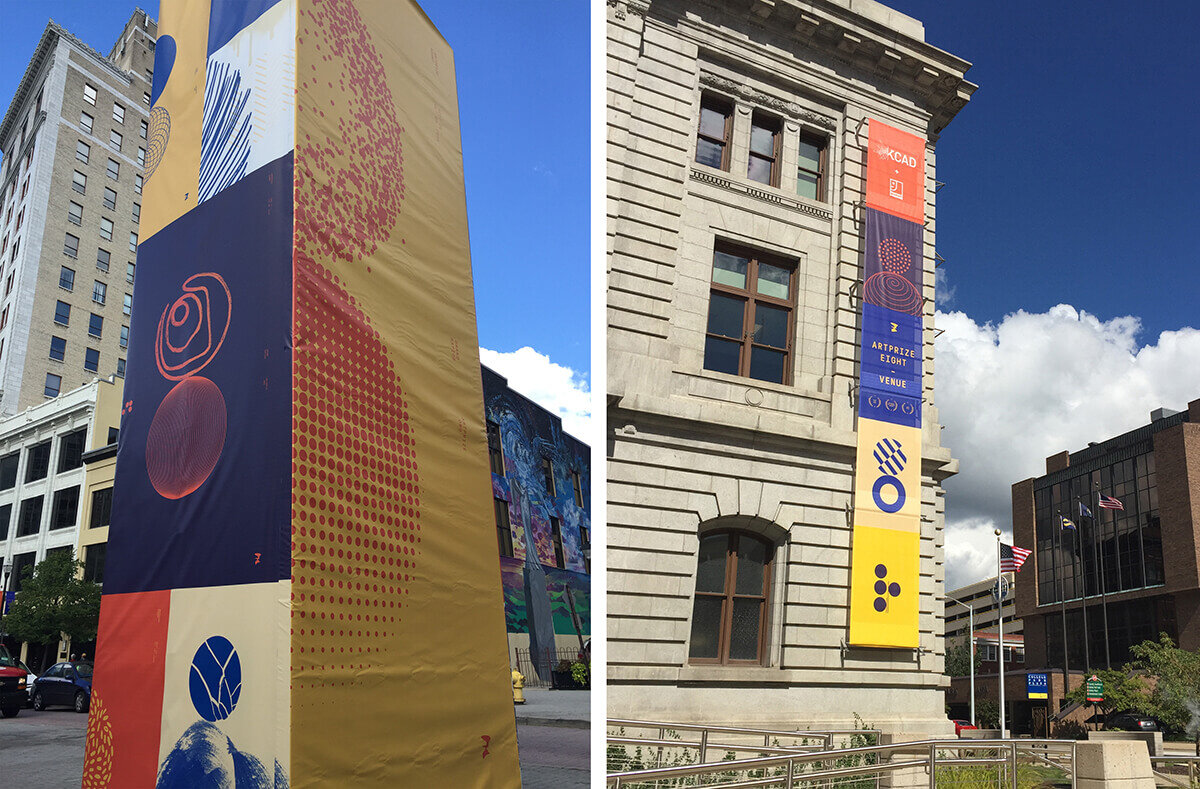
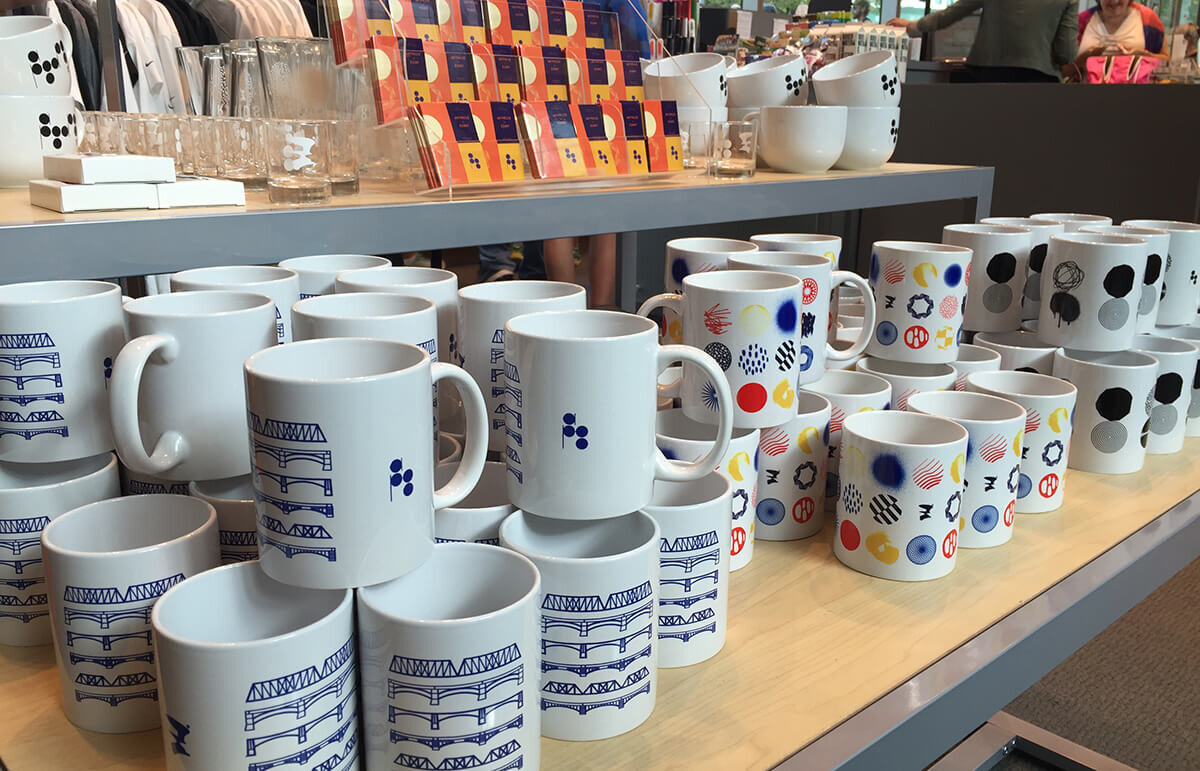
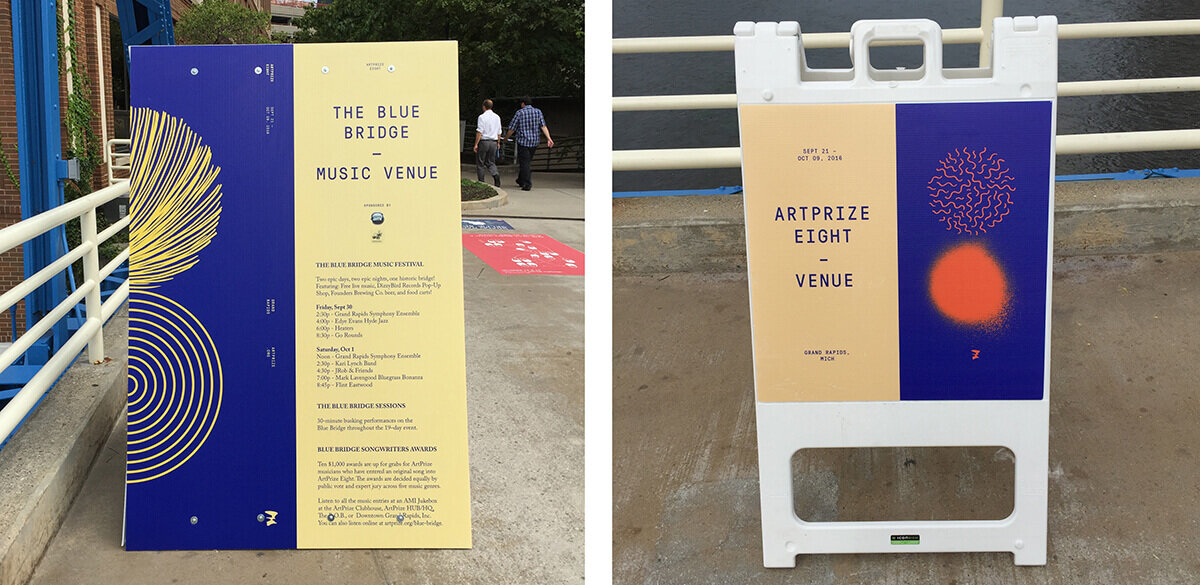
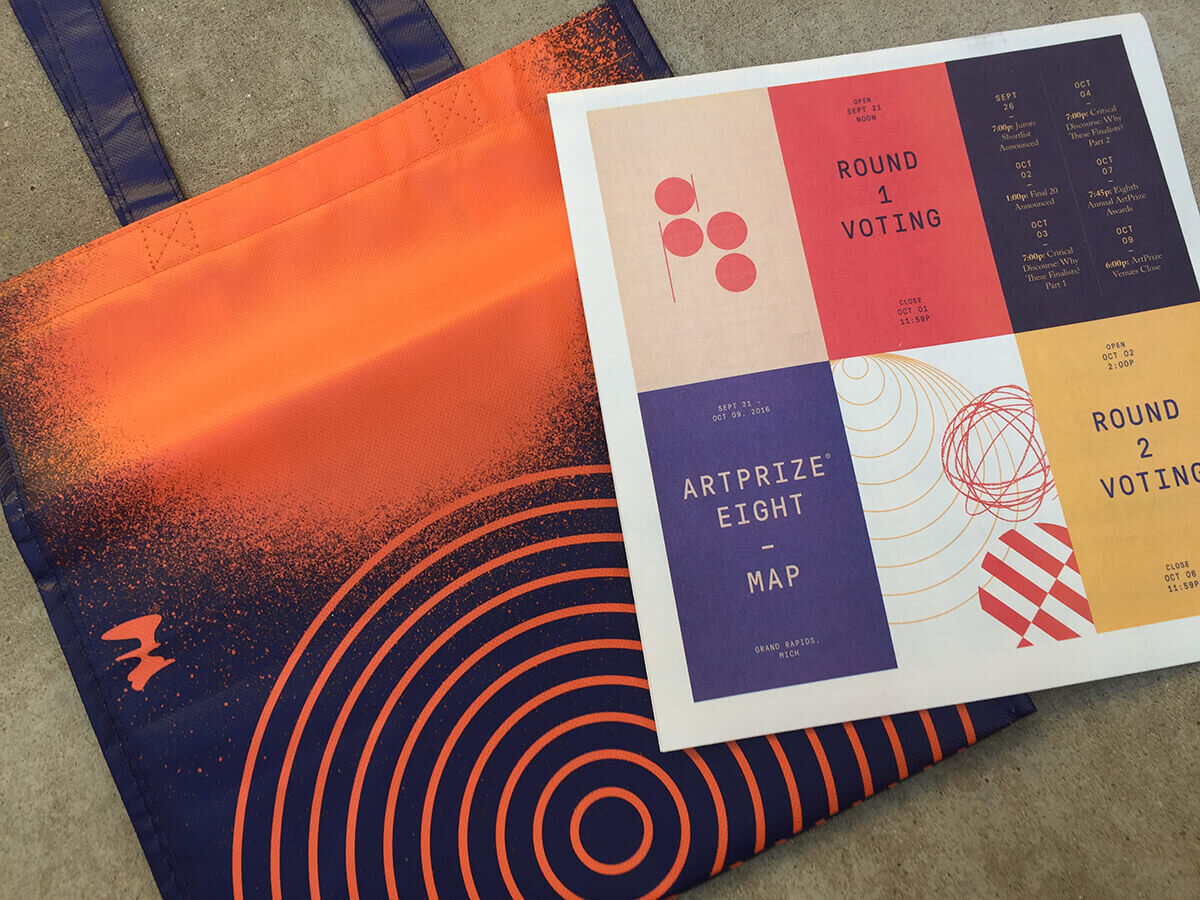
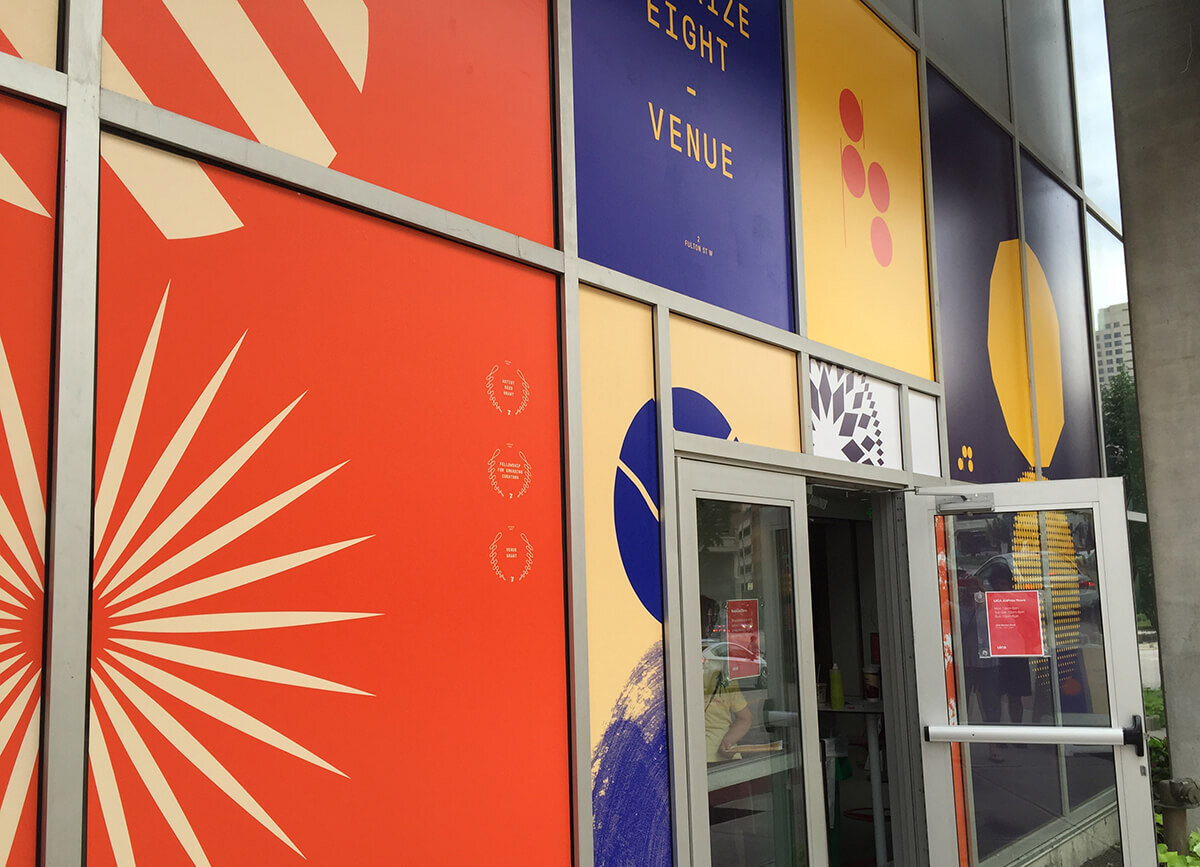

Telling stories of art and failure at PechaKucha
One of the annual events of Phoenix Design Week is PechaKucha night. A pecha kucha—Japanese for "chit-chat"—is a roughly 6 1/2-minute talk with a rigid framework of 20 slides that auto-advance after 20 seconds. This year’s theme revolved around the idea of process, and I thought it might be fun to share about my so-far-unsuccessful quest to find "my art." Grab a seat and get ready to watch me fail!
One of the annual events of Phoenix Design Week is PechaKucha night. PechaKucha.org—Japanese for "chit-chat"—is a roughly 6 1/2-minute talk with a rigid framework of 20 slides that auto-advance after 20 seconds. As the translation alludes to, the purpose of the format is to force a talk that is delightfully light and brief—more like an anectode (or chit-chat) than a lecture. This year, several speakers dropped out at the last second and I was approached as a possible replacement. I was neck-deep in design for the Method + Madness Conference, so I must have had a moment of insanity when I agreed to do the talk. The theme revolved around the idea of process, and I thought it might be fun to share about my so-far-unsuccessful quest to find "my art."Its rare that I give a talk like this (heck, its rare that I give any kind of talk). The talk developed into more of a personal story, that ended up being really fun to share. In case you missed it, I did a little recording of the it, which you can watch below. Grab a comfy seat and get ready to watch me fail!
2015 PHXDW Design by the Numbers
Back in July the 2015 Method + Madness conference was initially announced, and I approached the event chairs about getting involved. I met with Robert Renteria over coffee and, to my surprise, he asked if I'd take up the role of this year's Design Chair. The past months have been a whirlwind, and I thought it would be fun to break the project down by the numbers!
This post has been three months in the making. Back in July the 2015 Method + Madness conference was initially announced, and I approached the event chairs about getting involved. Phoenix Design Week (PHXDW) and the Method + Madness conference has played a critical role in my life, and I really wanted to find a way to give back this year and show my appreciation for everything I've gained from the event and the Phoenix Design Community (PHXDC) over the past several years. I met with Robert Renteria over coffee and, to my surprise, he asked if I'd take up the role of this year's Design Chair. After considering it for a few minutes, I cautiously agreed to come along for the ride. And what a ride it has been! This role has been one of the most challenging and rewarding things I've ever been a part of.
Robert kicked things off with the design of the PHXDW and M+M event logos, and set the overall design vision for the event. After a detailed discovery conversation with him, I was able to pick up where he left off and the fun began. I was lucky enough to get to design the program, signage, swag items and lots of social assets (just check the stats below!). The past few months have been a whirlwind, and I thought it would be fun to break the project down by the numbers! Plus, watch a cool animation of the PHXDW social graphics and check our portfolio soon for samples of the work.
A branding lesson from Breakfast at Tiffany’s
As a brand designer I notice examples of good and bad branding everywhere. In fact, I recently watched the classic movie Breakfast at Tiffany’s and noticed a scene that stuck out to me as a good example of how important it is to be purposeful in developing your brand.
As a brand designer, I notice examples of good and bad branding everywhere. In fact, I recently watched the classic movie Breakfast at Tiffany’s and noticed a scene that stuck out to me as a good example of how important it is to be purposeful in developing your brand.
If you haven’t seen the movie, let me give you some background: A young woman named Holly is living it up in New York City when she encounters a new neighbor in her building. The neighbor's name is Paul Varjak, but Holly insists on calling him ‘Fred’ because he bears a striking resemblance to her brother who is named Fred. Throughout the movie she continues to introduce him to all her friends and colleagues as ‘Fred.’
At one point, Paul makes a phone call to Holly’s former agent (to whom Holly had introduced him). The beginning of the call goes something like this:
PAUL: “Hello, this is Paul Varjak.”
AGENT: “Who?”
PAUL: “It’s Paul Varjak. V-A-R-J-A-K.”
AGENT: “Who?”
PAUL: “Paul Varjack. V-A-R…. it’s Fred!”
AGENT: “Oh hey there, Fred, how are you doing?”
Despite the fact that his name was Paul, Holly was so persistent in calling him Fred that eventually everyone thought his name was actually Fred. This example is a simple introduction to a conversation but is a lesson in the power of branding. You see, if the definition of a brand is "what people think you are” then the “-ing” in branding is the process of influencing that impression. If you aren't intentional in shaping your brand image you just might develop an identity or reputation you never meant to.
How have you purposefully shaped your brand today?
Learn more about branding
What is a brand? by Strong Design
Marketing is a department, branding is a culture by Nocturnal Design

Think we might be a good fit for you?
Let’s talk about how we can design your future.



